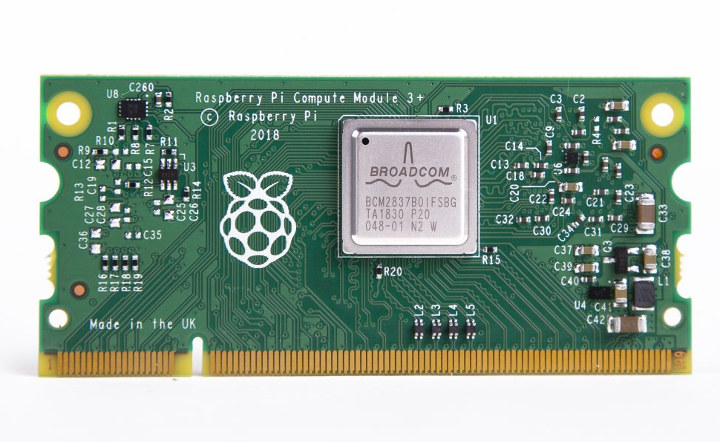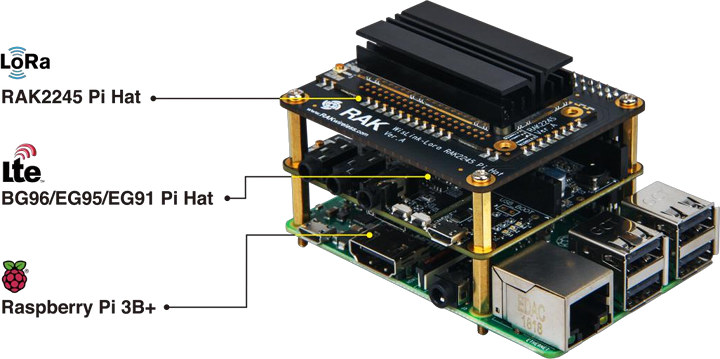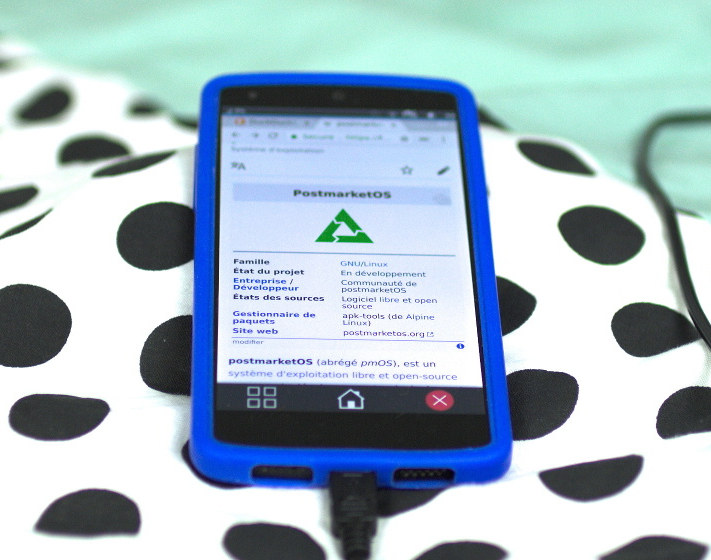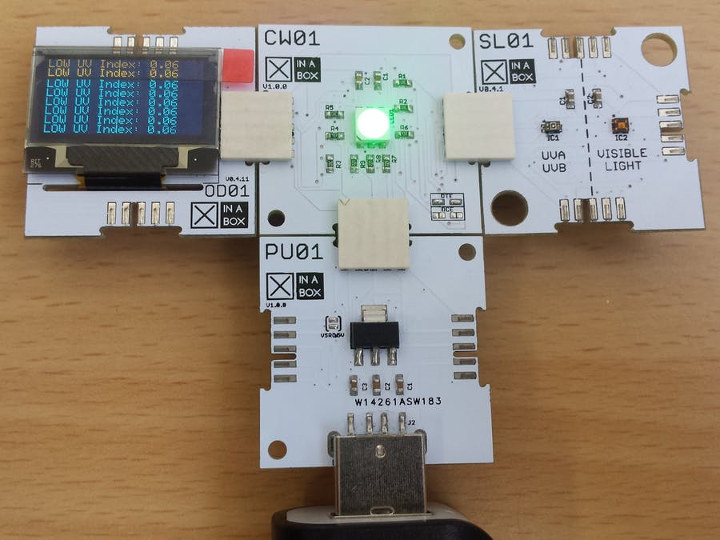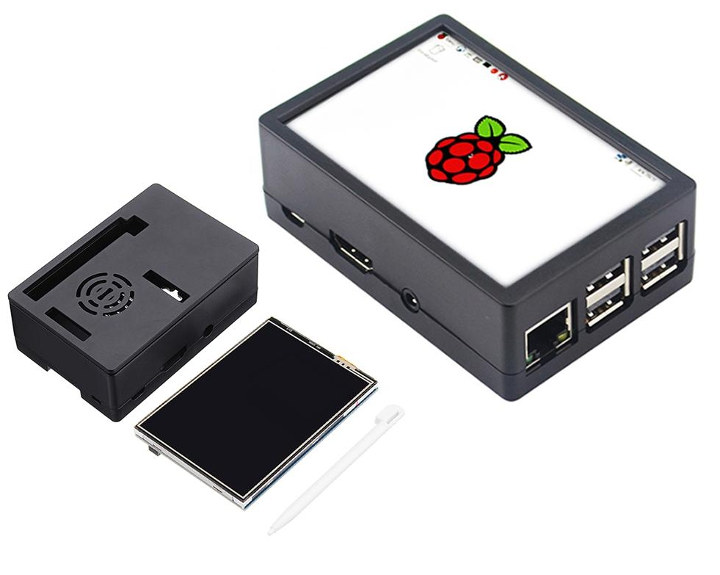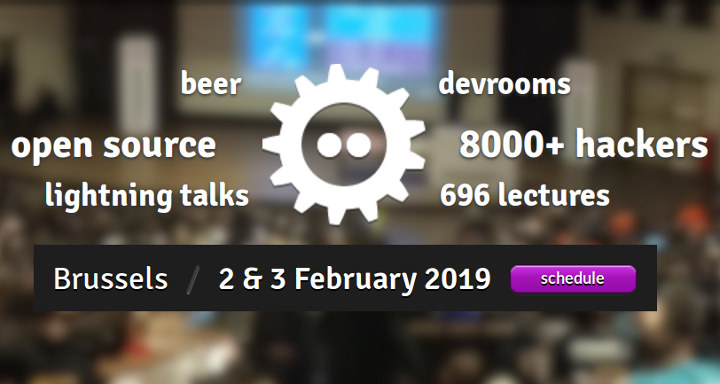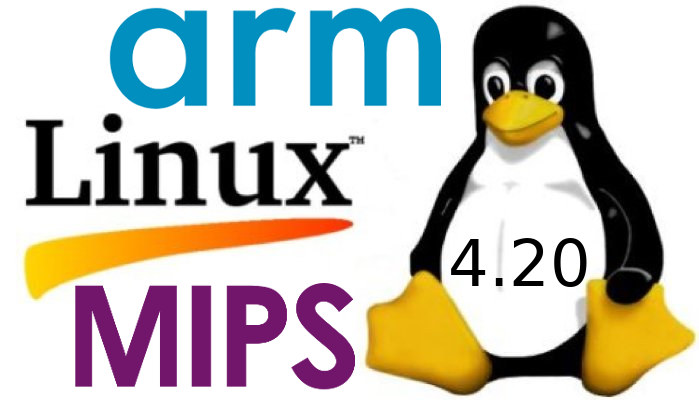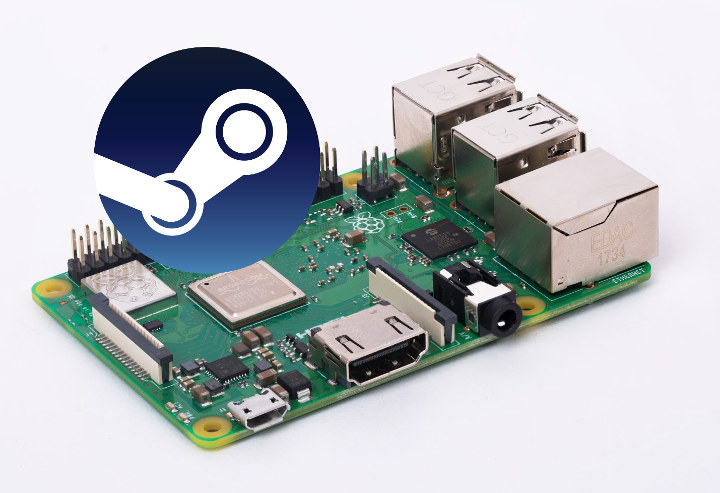Raspberry Pi 3 Compute Modules CM3 and CM3L launched about two years ago based on Broadcom BCM2837 quad core processor found in Raspberry Pi 3 board. Last year, the Raspberry Pi Foundation introduced Raspberry Pi 3B+ board with a slightly faster Broadcom BCM2837B0 processor, Gigabit Ethernet, and WiFi 802.11ac. So it would have made sense for the foundation to provide an upgrade to their CM3 compute modules with Broadcom BCM2837B0 processor, and that’s exactly what they’ve done with the launch of Raspberry Pi Compute Module 3+ for $25 and up. There are four variants of Raspberry Pi Compute Module 3+ with different storage options and sharing the following specifications: SoC – Broadcom BCM2837B0 quad core Cortex A53 processor @ 1.2 GHz with Videocore IV GPU System Memory – 1GB LPDDR2 SDRAM Storage CM3+/Lite – SD card signals through SO-DIMM connector CM3+/8GB – 8GB eMMC flash CM3+/16 GB – 16GB eMMC […]
RAK Wireless Introduces DIY Cellular LoRa Gateways, Raspberry Pi & 96Boards Compatible LoRa Modules
RAK Wireless already has a decent offering of LoRa gateways and modules, but the company has been working on two new LoRa gateways, one Enterprise grade model – RAK7249 gateway – based on fully custom hardware, and the other – Pilot Gateway Pro RAK7243 – features a Raspberry Pi 3B+ board with Cellular & GPS connectivity on top of a LoRa radio. RAK Wireless will also introduce three RAK2245/RAK2248 LoRa concentrator modules that can easily be used with boards following Raspberry Pi, or 96Boards IoT edition form factors. RAK7249 DIY Enterprise LoRa Gateway Specifications: Main Board WiFi Module – RAK634 Module SoC – Mediatek MT7628N MIPS processor @ up to 580 MHz System Memory – 128MB DDR2 RAM Storage – 16MB SPI flash Connectivity – WiFi: 2×2 MIMO 802.11b/n/n mPCIe LoRa concentrator card Semtech SX1301 based Standard version with 8 channel Gateway and also support Max.16 channel Gateway. Tx Power […]
postmarketOS Linux Mobile OS Supports Over 100 Devices
postmarketOS is a Linux operating system that was first unveiled in 2017, with the developers aiming to provide long term support in order to extend the life of existing phones. The operating system is based on Alpine Linux with touch-screen optimization, and the goal is to provide updates, including security updates, for at least 10 years just like you would get on a computer. The project was really getting started at the time, but now the community has provided an update for the first 600 days of development, and over 100 devices are now supported, mostly smartphones such as Google Pixel 3 XL or Motorola Droid 4, but also some SBCs, for instance, Pine A64-LTS and various Raspberry Pi boards. “Supported” means the 112 devices listed can boot postmarketOS, but the operating system is still considered to be alpha software, and for example, if you look at the features matrix […]
XinaBox’s xChips Enable Modular Electronics for Makers & STEM Education
So today, I decided to have a look a 96Boards website to see if there was anything new from the community, and I came accross “X in a Box B901“, an “☒CHIP is designed to interface with the 96 Boards, such as the Dragonboard 410c. This provides an interface to support the ☒CHIP ecosystem, adding support for many additional sensors etc…” I had no idea what it was all about, so obviously I had to investigate. Xinabox (X in a Box) is an ecosystem of modular electronics boards used for developing, making products and learning. There are now over 70 modular xChip” with cores/CPUs, sensors, power, communication, output, and storage. They are interconnected together without wires, soldering, breadboards, and adapters are provided for Raspberry Pi, 96Boards, and other development boards. xChips can be sorted into 8 categories: Cores – MCU/CPI cores based on Microchip ATMega328P, SAMD21, ESP8266, or ESP32 with […]
$16 Raspberry Pi Case Integrates a 3.5″ Touchscreen Display
Most Raspberry Pi cases are not really newsworthy, but there’s an unnamed case for Raspberry Pi 2 & 3 boards sold for $15.99 on Banggood that looks like a normal case, except the top cover is replaces with a 3.5″ touchscreen display, and the kit also ships with a stylus. Key features of the display: LCD Type – TFT LCD Interface – SPI Touch Screen Type – Resistive Touch Screen Controller – XPT2046 Colors – 65536 Backlight – LED Resolution – 320×480 (Pixel) Aspect Ratio – 8:5 There are two ways to assemble the kit. Either with the 3.5″ display and no fan, or without display, but a top cover including a fan. I’ve not sure why would anyone would purchase this kit without using the display but at least you know that’s an option. There are ready-to-use Raspbian images for Raspberry Pi 3 and Raspberry Pi 3 B+, but […]
FOSDEM 2019 Open Source Developers Meeting Schedule
FOSDEM – which stands for Free and Open Source Software Developers’ European Meeting – is a free-to-participate event where developers meet on the first week-end of February to discuss open source software & hardware projects. FOSDEM 2019 will take place on February 2 & 3, and the schedule has already been published with 671 speakers scheduled to speak in 711 events themselves sorted in 62 tracks. Like every year, I’ll create a virtual schedule based on some of the sessions most relevant to this blog in tracks such as open hardware, open media, RISC-V, and hardware enablement tracks. February 2 10:30 – 10:55 – VkRunner: a Vulkan shader test tool by Neil Roberts A presentation of VkRunner which is a tool to help test the compiler in your Vulkan driver using simple high-level scripts. Perhaps the largest part of developing a modern graphics driver revolves around getting the compiler to […]
Linux 4.20 Release – Main Changes, Arm and MIPS Architectures
After Greg K-H handling Linux 4.19 release, Linus Torvalds is back at the helm, and released Linux 4.20 just before Christmas: Let’s face it, last week wasn’t quite as quiet as I would have hoped for, but there really doesn’t seem to be any point to delay 4.20 because everybody is already taking a break. And it’s not like there are any known issues, it’s just that the shortlog below is a bit longer than I would have wished for. Nothing screams “oh, that’s scary”, though. And as part of the “everybody is already taking a break”, I can happily report that I already have quite a few early pull requests in my inbox. I encouraged people to get it over and done with, so that people can just relax over the year-end holidays. In fact, I probably won’t start pulling for a couple of days, but otherwise let’s just […]
Steam Link Beta now Available for Raspberry Pi 3 / 3B+
Steam is a digital distribution platform developed by Valve Corporation for purchasing and playing video games that was first launched in 2003 for Windows computer only. Since then Mac OS (2010), Linux / Ubuntu, as well as mobile devices running Android & iOS (2012) have been supported in Steam. Mobile could only be used to browse the storefront, manage games, and access the community. However more recently, the company released Steam Link app that allows players to stream games to their mobile devices, while being rendering on more powerful machines. The good news is that Steam Link (beta) has now been released for Raspberry Pi 3 / 3B + boards. All you need is either board running Raspbian Stretch, and install Steam Link as follows:
|
1 2 |
curl -#Of http://media.steampowered.com/steamlink/rpi/steamlink_1.0.5_armhf.deb sudo dpkg -i steamlink_1.0.5_armhf.deb |
Once the app is installed launch it in the command line with steamlink, or launch it from the Games menu in the desktop environment. Steam […]


